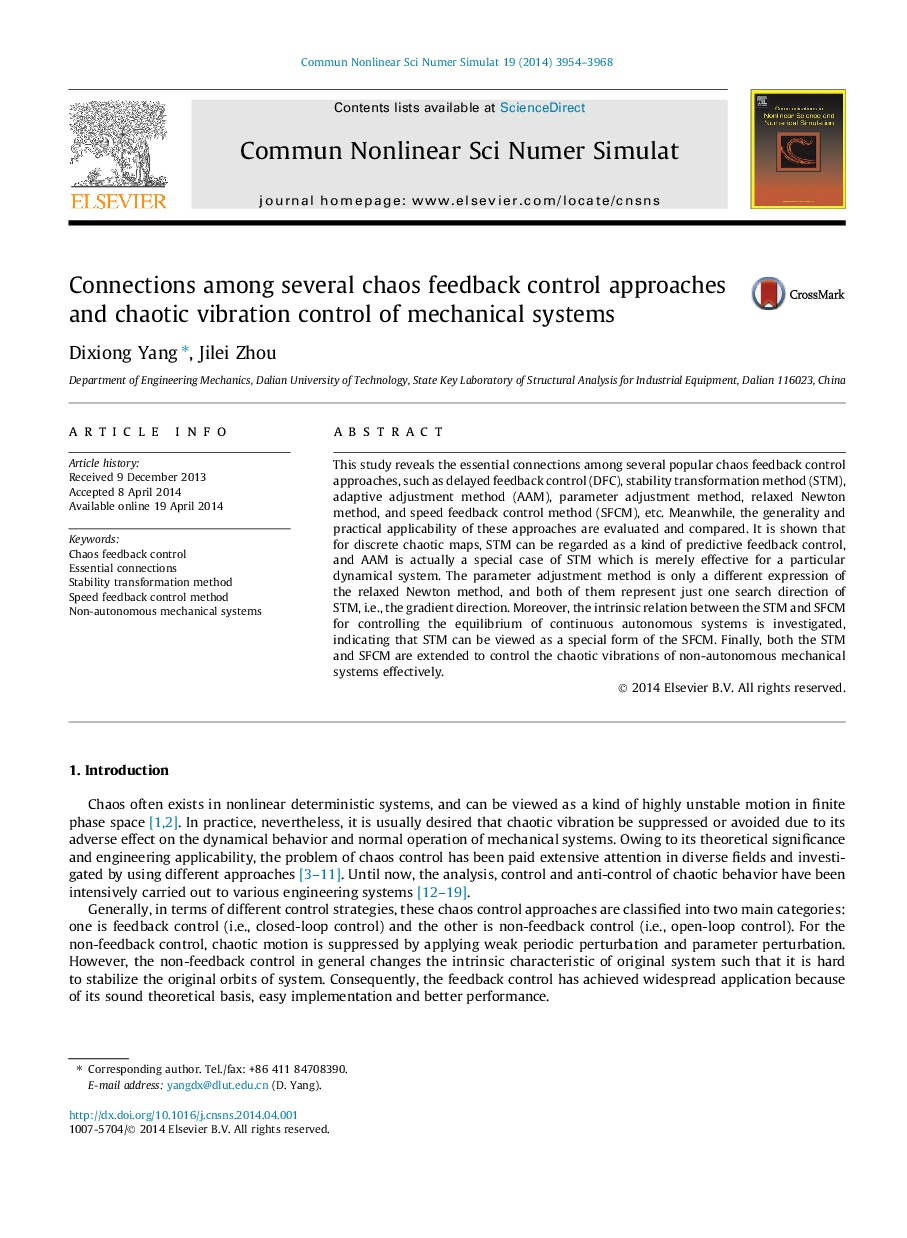| کد مقاله | کد نشریه | سال انتشار | مقاله انگلیسی | نسخه تمام متن |
|---|---|---|---|---|
| 758769 | 896451 | 2014 | 15 صفحه PDF | دانلود رایگان |
• We revealed essential connections among several popular chaos control approaches.
• Generality and practical applicability of these approaches are evaluated and compared.
• STM and SFCM are extended to chaos control of non-autonomous mechanical systems.
This study reveals the essential connections among several popular chaos feedback control approaches, such as delayed feedback control (DFC), stability transformation method (STM), adaptive adjustment method (AAM), parameter adjustment method, relaxed Newton method, and speed feedback control method (SFCM), etc. Meanwhile, the generality and practical applicability of these approaches are evaluated and compared. It is shown that for discrete chaotic maps, STM can be regarded as a kind of predictive feedback control, and AAM is actually a special case of STM which is merely effective for a particular dynamical system. The parameter adjustment method is only a different expression of the relaxed Newton method, and both of them represent just one search direction of STM, i.e., the gradient direction. Moreover, the intrinsic relation between the STM and SFCM for controlling the equilibrium of continuous autonomous systems is investigated, indicating that STM can be viewed as a special form of the SFCM. Finally, both the STM and SFCM are extended to control the chaotic vibrations of non-autonomous mechanical systems effectively.
Journal: Communications in Nonlinear Science and Numerical Simulation - Volume 19, Issue 11, November 2014, Pages 3954–3968
